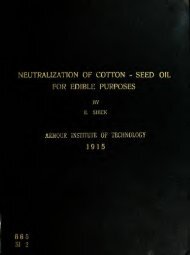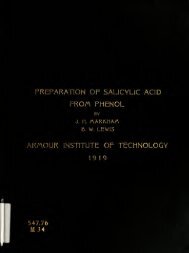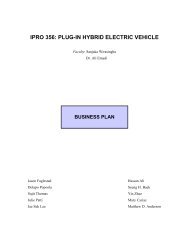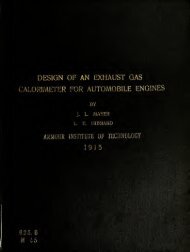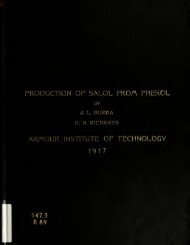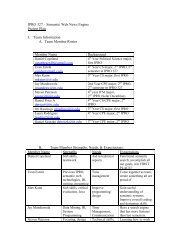Glycerol and spent lye clarification - Illinois Institute of Technology
Glycerol and spent lye clarification - Illinois Institute of Technology
Glycerol and spent lye clarification - Illinois Institute of Technology
Create successful ePaper yourself
Turn your PDF publications into a flip-book with our unique Google optimized e-Paper software.
sepaj?ated soap has been sTcimmed <strong>of</strong>f it is<br />
removed to the glycerine plant where it is to<br />
be treated before going to the evaporators.<br />
The alkali in the <strong>lye</strong> must be neutralized <strong>and</strong><br />
the organic impurities removed.<br />
The neutralization <strong>of</strong> the alkali is<br />
affected by the addition <strong>of</strong> hydrochloric or<br />
sulphuric acids. The use <strong>of</strong> the former is<br />
open to objection due to high cost. It has<br />
the advantage, however, <strong>of</strong> producing as a<br />
result <strong>of</strong> the chemical action, sodium chloride<br />
which after recovery can be used again in the<br />
soap kettle.<br />
Sulphuric acid is most generally used.<br />
Its use introduces sulphate into the <strong>lye</strong> which<br />
salt is recovered with the common salt from<br />
the evaporator. Sodium sulphate however is<br />
practically useless for graining soap, its<br />
graining qualities being but three fifths that<br />
<strong>of</strong> sodium chloride <strong>and</strong> the grain produced is<br />
s<strong>of</strong>t <strong>and</strong> <strong>of</strong>ten hard to separate from the <strong>lye</strong>.<br />
To remove the organic impurities some<br />
9




